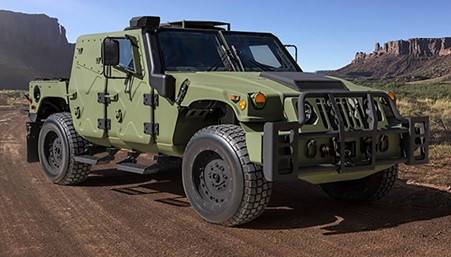- within Real Estate and Construction, Consumer Protection and International Law topic(s)
- with readers working within the Law Firm industries
AM General LLC, the company in contract with the U.S Department of Defence to build the Humvee military vehicle (High Mobility Multipurpose Wheeled Vehicle), sued Activision Blizzard, Inc., a video game company, in 2017, alleging that Activision copied the vehicle's design for several issues of the popular Call of Duty video game franchise, as well as for repeatedly invoking the "Humvee" trademark and using the vehicle and trademarks in various promotional materials. The defendant maintained that the First Amendment's robust protection compelled dismissal of the AM General's allegations.
Judgment
If the defendant's product is artistic or expressive, a two-prong test articulated in Rogers v. Grimaldi, 875 F.2d 994 (2d Cir. 1989) is applied which under most circumstances allows artistic or expressive works to use trademarks without risking liability under the Lanham Act. This is done mainly to protect speech under the First Amendment. The two prongs to the test are: determination of artistic relevance of the work (herein use of Humvees in Call of Duty) and if it has then the second prong is to prove whether the use "explicitly misleads as to the source or the content of the work."

[Picture Credit: national defense magazine]
The court concluded that use of Humvees in the game is an artistic expression and value. For the second prong the court applied the Polaroid test and after analysing each factor concluded that it weights in defendant's favour. The court decided that Activision Blizzard's usage of Humvees was not clearly deceptive by applying the Polaroid Factors. Although some user polls indicated considerable confusion, the fact that AM General was a vehicle manufacturer and Activision Blizzard was a video game publisher largely counted against such assumptions.
"[If] the marks are used for different purposes and are presented to the public differently, even though they say the same thing, they are dissimilar and no issue of fact is created." DeClemente, 860 F. Supp at 47.
AMG's claim of trade dress infringement and unfair competition were also negated by the court. In short, the Court decided that "increasing the games' realism" was enough to make the usage of Humvees a part of the game's artistic expression, and granted Activision Blizzard summary judgement on all of AM General's claims.
The district court in this case found that Humvees have artistic relevance. The vehicle used by the military operations around the world having modern warfare will give the sense of the actual particularized reality to the players of realism and lifelikeness. And the court also found in this case that there is no any evidence which can show that the consumer confusion or explicitly misleading. And for a degree of similarity, the district court pointed out that, the purpose of the using mark by the plaintiffs is to sell the vehicles to militaries and on the other hand, the purpose of the defendants is to create realistic modern warfare video games. So, there is distinction of purpose and lack the similarity hence this factor is in favor of defendants.
For the proximity of the products, the court pointed out that, proximity may be measured by both things i.e., geographic proximity and market proximity. In this case, since the vehicle of plaintiff has no similar purpose as to the video game of the defendants, there is no issue of market proximity. So, it is also in favour of defendants.
For the issue relating to the Bridging the gap, which is the presumption that in future the senior user (plaintiffs), will enter into the market of junior user (defendants). The court found that AMG has not submitted any evidence that in future they are going to enter into the similar market of gaming as to which defendants are dealing with. So, there is also no issue of bridging the gap.
The content of this article is intended to provide a general guide to the subject matter. Specialist advice should be sought about your specific circumstances.

